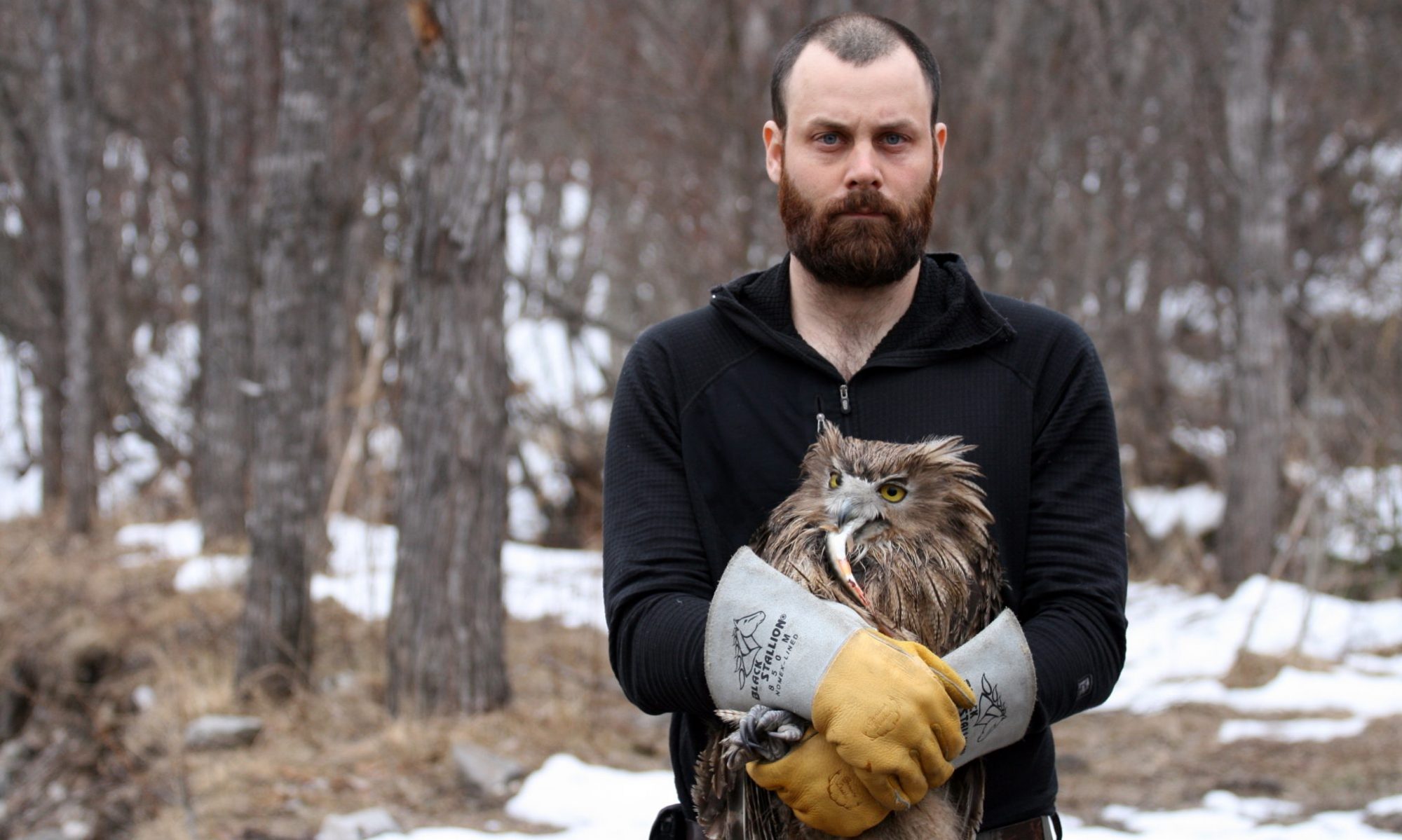
Another good year! In total, I worked on 19 stories (down from 22 in 2016).
The most important writing development of 2017, without question, was finding a home for my Blakiston’s fish owl book manuscript. Or, should I say, two homes: the manuscript was picked up by Farrar, Strauss, and Giroux in the United States, and Penguin secured rights in the United Kingdom. This is a natural history travel adventure—a non-fiction account of my first five years searching for and studying this endangered species. I’m looking forward to spending some of 2018 working with my editor to revise and refine my 115,000-word text (~400 pages). I’m guessing the book will come out in 2019, but we’ll see.
Thanks for reading in 2017….let’s see what happens in 2018!
Books: 1 under contract, 1 in print
- My account of fieldwork with Blakiston’s fish owls, tentatively titled “Owls of the Eastern Ice,” was picked up by Farrar, Strauss, and Giroux in the United States. Penguin UK secured rights in the United Kingdom.
- My 2016 translation of Vladimir Arsenyev’s Across the Ussuri Kray (Indiana University Press) continued to garner solid reviews in 2017, including Times Literary Supplement and Slavonic and East European Review.
Web Articles: 14
- Scientific American: 4 entries into my East of Siberia series (14 to date), as well as an OpEd about tigers for Global Tiger Day
- Audubon: an article about the threat of bird hunting in Southeast Asia to critically-endangered Spoon-billed sandpipers
- Mongabay: an article about how tigers adapt to varying environments across Asia
- Wild View: 6 entries for this Wildlife Conservation Society photo blog (30 to date), including one that made the Top Ten List for 2017
- Medium: an article for Earth Day 2017 about the need for science-based decision making in conservation.
Print Articles: 1
- Minnesota Conservation Volunteer: a short article about a pair of Merlins (small falcons) nesting a stone’s throw from my back porch in Minneapolis
Scientific Articles (in print): 1
- Oryx: Slaght, J.C., B. Milakovsky, D. Maksimova, I. Seryodkin, V. Zaitsev, A. Panichev, and D. Miquelle. 2017. Anthropogenic influences on the distribution of a Vulnerable coniferous forest specialist: habitat selection by the Siberian musk deer Moschus moschiferus. Oryx doi: 10.1017/S0030605316001617
Scientific Articles (accepted but not yet in print): 2
- Slaght, J.C., T. Takenaka, S.G. Surmach, Y. Fujimaki, I.G. Utekhina, and E.R. Potapov. 2018. Global Distribution and Population Estimates of Blakiston’s Fish Owl. Chapter in Biodiversity Conservation Using Umbrella Species, Springer (scheduled for March 2018)
- Slaght, J.C., S.G. Surmach, and A.A. Kisleiko. Ecology and conservation of Blakiston’s fish owl in Russia. 2018. Chapter in Biodiversity Conservation Using Umbrella Species, Springer (scheduled for March 2018)
Television Appearances: 2
- News interview (in Russian) with OTV about my Arsenyev translation (Across the Ussuri Kray, Indiana University Press, 2016).
- News interview (in Russian) with VestiPrimorye about my Arsenyev translation (Across the Ussuri Kray, Indiana University Press, 2016)


